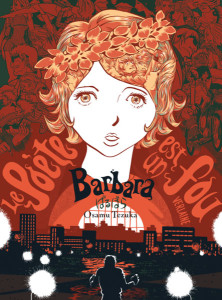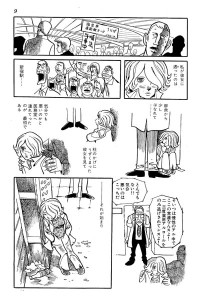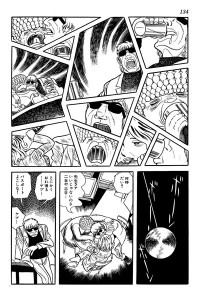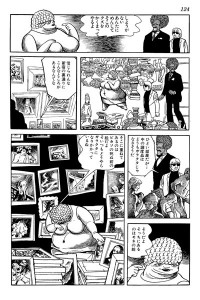Barbara (Manga)
Also known as ばるぼら (Barubora)
| English Title: | Barbara |
| In English? | Yes |
| Japanese Title: | ばるぼら Barubora |
| Type: | Ongoing Serial |
| Original run: | 1973/07 – 1974/05 |
| Published in: | Big Comic ビッグコミック |
| Published by: | Shogakukan |
| Volumes: | 2 MT-145 | MT-146 |
One of Osamu Tezuka’s most adult and sexually-charged works, Barbara (1973-74) was originally serialized as a follow-up to Ayako (1972-73) in Big Comic from July 1973 to May 1974.
What it’s about
Barbara (1973-74) follows the story of Yosuke Mikura, a very successful and influential novelist. Surrounded by blushing devotees, Mikura is so popular that both his publisher (seeking to lock up his future publications) and a major politician (seeking to capitalize on his fame) attempt to marry off their daughters to him. However, behind the bright lights of his fame and fortune, Mikura desperately struggles to hide a dark secret – the fact that he suffers from crippling sexual perversions which are driving him towards madness.
As the story opens Mikura, while passing through Shinjuku Station, encountes a perpetually-drunken but strikingly erudite hippy named Barbara. He takes her in, and the two quickly develop a friendship, with Mikura caring for Barbara in her drunken stupor, and she caring for him when his hallucinations drive him into to sexual encounters with animals and inanimate objects which he imagines to be women. As their friendship deepens and takes on a more romantic edge, Mikura begins to suspect that there is more to this hippy than meets the eye. As he uncovers more about her past, evidence seems to suggest that she may not, in fact, even be human. When Mikura happens to drop by a bar in Shinjuku and meets Barbara’s mother, Munemoshune – a name strikingly similar to Mnemosyne, the Greek goddess who slept with Zeus and gave birth to the nine Muses – he comes to believe she is a muse of the arts that has been residing with artist after artist over the centuries.
As Mikura becomes ever more obsessed with Barbara, he descends into a life of sadomasochistic clubs, black masses, mother goddess cults, voodoo murderers and more. As his own madness worsens, it becomes almost impossible to tell the difference between the fantastic elements surrounding Barbara and those in his own mind.
What you should know
As with many of Tezuka’s works, Barbara was inspired by a literary source – in this case Les contes d’Hoffmann (The Tales of Hoffmann), an opéra by Jacques Offenbach. In the opera, Hoffmann is also approached by a muse who tries get him to forsake all other loves and devote himself fully to her. For Tezuka, the famous third act, where Hoffman loses his reflection to the courtesan Giulietta, clearly illustrates the dilemma all artists must one day face – accept compromise for the sake of fame, or to resign oneself to solitude in defense of one’s principles.
Barbara (1973-74) stands out very distinctly from the themes usually associated with Tezuka’s work. Although, given the fact that Barbara seems to change her appearance at will, there is an element of Tezuka’s often explored theme of transformation, it is not the primary theme. Instead, in the afterword of the Osamu Tezuka Complete Manga Works edition (MT-146), Tezuka himself suggests that, “perhaps Barbara can be seen as an allegory of art” (1982, p. 232), and he adjusted his artwork style to introduce more fluid and twisted elements to support this theme. However, Tezuka also notes that when it was first being serialized in Big Comic, some found Barbara (1973-74) to be a little too subjective, presenting a world too particular to be well understood. In response to this, Tezuka began to introduce elements of the occult into the story – something he felt the general public was, at the time, keenly interested in.
As a sexually-charged treatment of the madness of an author, Barbara (1973-74) is similar to I.L (1969-70), which deals with a failed filmmaker struggling between reality and fantasy. However, I.L (1969-70) is episodic and has nowhere near Barbara‘s (1973-74) level of complexity. Also, despite being structurally similar to both Ayako (1972-73) and Message to Adolf (1983-85), in that it illustrates a portrait of madness and gradual degeneration, those works attribute it to Word War II and it’s aftermath, which is not the case in Barbara (1973-74).
Where you can get it
In 2012, Digital Manga Publishing made Barbara (1973-74) the first Osamu Tezuka manga to be successfully funded and printed through the crowd-funding platform Kickstarter. It was published as a single volume and featured a brilliant custom-designed cover.






